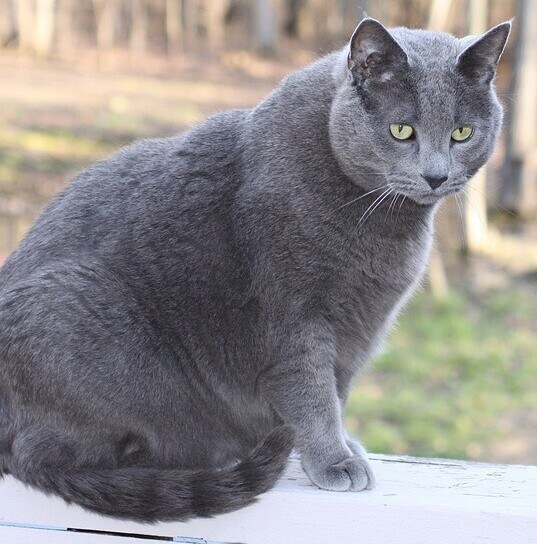Have you ever wondered why your pet might be tipping the scales more than they should? Well, you’re not alone. In this article, we dig deep into the topic of pet obesity, offering some valuable insights and practical tips to keep your beloved pet in tip-top shape.
We’ll help you understand the causes of pet obesity, recognize the symptoms, and take proactive steps.

Understanding Pet Obesity
Pet obesity is a serious issue. We’ll uncover the reasons behind those extra pounds and explore how they can impact your pet’s health.
What Causes Pet Obesity?
Understanding what causes pet obesity is worth exploring, particularly when the well-being of your pets is at risk.
Overfeeding: This is a significant contributing factor. Even if you believe that giving extra snacks is a sign of affection, too much can cause weight gain.
Lack of exercise: Just like us, pets need physical activity to stay fit and healthy. Without it, those pounds can start piling on.
Poor diet choices: Pet obesity may result from feeding your pet food high in calories but poor in nutrients. Pay attention to the ingredient labels and choose high-quality foods.
Medical conditions: Your pet may find it more difficult to maintain weight if they have hormonal imbalances or genetic predispositions. Seeing a veterinarian can assist in ruling out any underlying problems.
Beyond appearance, pet obesity can lead to serious health issues such as diabetes, rheumatoid arthritis, and heart disease. According to the Association for Pet Obesity Prevention, over 50{dec8b186a54ac9fa614cae96717ab326dbf2f9ac231cc4579a8a288cd707483c} of dogs and cats in the United States are overweight or obese.
The Impact of Pet Obesity on Health
Several factors contribute to pet obesity and can impact your pet’s health.
Extra weight: Excess weight strains joints, increasing arthritis and musculoskeletal issues in pets. Try wearing a backpack filled with bricks all day. This is similar to a pet carrying extra weight.
Developing medical conditions: Pet obesity increases the risk of diabetes due to insulin resistance, and high blood sugar levels. In addition, extra fat can potentially lead to hypertension and heart failure.
Higher risk for cancer: Compared to their slim counterparts, obese dogs have a higher chance of developing cancer.
Breathing difficulty: Pet obesity can affect your pet’s respiratory system, making breathing more difficult and increasing their risk of developing diseases like asthma.
Recognizing Signs of Pet Obesity
Although it’s not always simple to recognize, knowing the warning signals can significantly impact your pet’s well-being. We’ll look at how to tell if your pet is carrying a few extra pounds and why it should be addressed sooner rather than later.
How to tell if Your Pet is Overweight
Body Shape: Observe their body shape. Is there a lack of definition in the abdomen or waist? Can you feel their ribs without excessive pressure? If not, this might indicate potential weight gain.
Look at them from above: Is their waistline visible, or does it disappear into their body? Is their stomach tucked in or protruding downward? It should ideally be tucked up to reveal a slender profile.
Behavioural changes: Observe your pet’s behaviour, such as decreased activity or difficulty with daily routines such as jumping up on the couch, as these may indicate weight-related issues affecting their quality of life.
Body Condition Scoring for Pets
Body condition scoring for pets helps determine their weight. It rates your pet’s body on a scale from 1 to 9, ranging from severe underweight to obesity.
To assess your pet’s health, feel their hip bones, spine, and ribs without excessive pressure. Feeling them easily is a good sign. Their waist should be visible from above and slightly tucked up.
Be objective when assessing your pet’s physical state. Seek advice from your veterinarian if you’re unsure, as they are there to ensure your pet’s optimal well-being.
Preventing Pet Obesity
To prevent pet obesity, provide a balanced diet and consistent exercise to maintain a healthy weight.
Importance of Proper Nutrition
A healthy diet aids in preventing pet obesity. Essentially, you are providing nourishment to keep your pets in top shape.
High-quality food: Choose high-quality pet food tailored to their needs—regardless of age, size, or dietary requirements.
Read labels for ingredients: Check ingredient labels and aim for real, whole foods with plenty of protein and essential nutrients.
Avoid fillers and carbs: Excessive carbohydrates can contribute to weight gain.
Portion control: Portion control is key. Giving too much kibble is easy, but sticking to recommended serving sizes can help avoid consuming too many calories.
Add fresh fruits and vegetables: Add these to your pet’s diet as healthy snacks or meal toppers, providing variety, flavour, and additional vitamins and minerals for overall health.
Fresh, clean water: Provide fresh, clean water—hydration is necessary for digestion and metabolism.
If you are unsure, consult your veterinarian or a qualified pet nutritionist for personalized recommendations on pet nutrition. Their advice will ensure pets maintain a healthy weight.
Incorporating Exercise into Your Pet’s Routine
Include exercise in your pet’s routine since it is essential for preventing pet obesity and promoting overall health. Pets require frequent exercise to stay healthy and happy, as people do.
Fun activities: Find fun activities for your pet’s breed, age, and fitness level. Set aside dedicated play time and use interactive, like feather wands, laser lights, or puzzle feeders.
For small pets such as rabbits or guinea pigs, provide plenty of opportunity for them to explore and play. Offer toys, climbing structures and tunnels to keep their minds and bodies active.
Daily walks: Daily walks are an excellent way to get your dog moving and strengthen your bond with them. Vary the walking distance, for at least 30 minutes, at a pace based on the dog’s activity level and medical issues. Engage in water games such as fetch or swimming for dogs.
Managing Pet Weight
Practical strategies can create a personalized weight management plan for your pet while tracking their progress. These tips will ensure they maintain a healthy weight and optimal well-being.
Creating a Weight Management Plan
Here, we will show you how to develop a customized weight-management plan for your pet, one that will enable them to lose those extra pounds and keep them off in the long run
Consult a vet: First, consult your veterinarian to determine your pet’s target weight and assess their diet and activity levels.
Feeding schedule: Create a portion control and nutrient-rich food plan. Consider reducing daily calorie intake or using a weight management formula. Avoid free-feeding and limit treats.
Add daily exercise: As mentioned earlier, regularly exercise your pet, aiming for 30 minutes of moderate to vigorous activity daily, based on age, breed, and fitness level, including walks, interactive toys, or outdoor adventures.
Monitor progress: Keep track of your pet’s progress by monitoring their weight regularly and adjusting their diet and exercise plan as needed. Be patient and persistent—weight loss takes time, and slow, steady progress is the key to achieving lasting results.
Celebrate progress made and stay committed to promoting the health and welfare of your pet.
Tracking Your Pet’s Progress
To properly manage their weight, track your pet’s progress. This will ensure they stay on the path to their well-being.
Record current information: Establish a baseline by recording your pet’s weight, body measurements, and relevant health metrics, such as activity levels and appetite.
Set measurable goals: Create specific goals for your pet’s weight reduction program, while working with your veterinarian. Consider factors like age, breed, and health, and break down objectives into manageable benchmarks.
Record of daily food intake: Keep a daily food journal for your pet to identify potential areas for changes and ensure they follow the recommended feeding schedule.
Exercise routine: Monitor your pet’s exercise routine, physical activity levels, behaviour, energy, and mobility to identify areas needing improvement or focus.
Follow-up visits to the vet: Regularly reassess your pet’s weight and overall health with follow-up visits to the veterinarian. They can provide valuable guidance and support and will adjust their plan as needed to ensure ongoing success.
Seeking Professional Help
Professional assistance is a necessary step to ensure your pet is healthy, particularly when it comes to properly managing their weight. Speak to veterinarians and pet nutritionists for personalized guidance and support tailored to your pet’s needs.
Consulting with a Veterinarian
Visit your veterinarian for a comprehensive physical exam to assess your pet’s weight and health, identifying potential health risks and determining if they are overweight or obese.
Your veterinarian can provide personalized dietary and exercise advice for your pet, considering factors like age, breed, activity level, and medical issues. They may suggest weight management formulas, portion sizes, or supplements. They can also evaluate progress, adjust plans, and address any concerns.
Working with your veterinarian ensures your pet receives the best support for a healthy life.
Working with a Pet Nutritionist
A pet nutritionist is a trained specialist who can provide personalized guidance and support for your pet’s weight and dietary needs. They assess your pet’s needs, including breed, age, activity level, and health issues. They create a personalized diet plan, recommending specific food types, serving quantities, feeding routines, and nutritional supplements to improve their health.
They can offer insights beyond conventional veterinary care, help navigate the food options available, and provide guidance on implementing the plan.
Working with a nutritionist ensures the best nutrition, so pet obesity isn’t a concern and support is available for a long, healthy life.
Conclusion
Controlling your pet’s weight is a journey that calls for commitment, tolerance, and the help of experts who can offer knowledgeable advice. You can contribute to your pet’s long, healthy, and happy life by being aware of the causes of pet obesity, identifying the symptoms, and taking proactive measures to prevent and control it.
Every step you take to ensure your pet maintains a healthy weight and overall well-being matters, from including correct nutrition and regular exercise into their routine to obtaining professional assistance from veterinarians and pet nutritionists.
Your pets rely on you to make informed decisions regarding their health, so don’t be afraid to ask for help. By working with your vet or nutritionist, you can ensure your furry friends get the love and care they require to enjoy good health for years.

We love to travel. For our trip to Mexico, we were able to save money by house sitting, which was something completely new to us. If this is something that interests you, then check out TrustedHousesitters or HouseSitMexico (be sure and use Code thetr6210d47b7cc90 for discount). We hope you visit often.